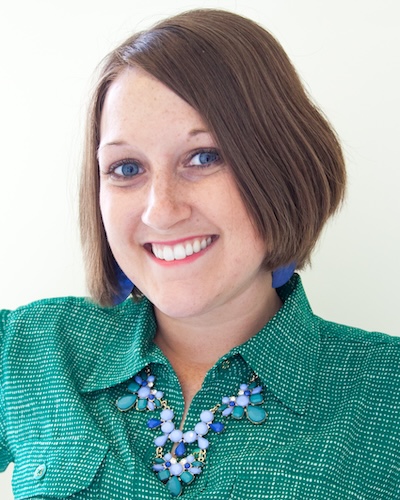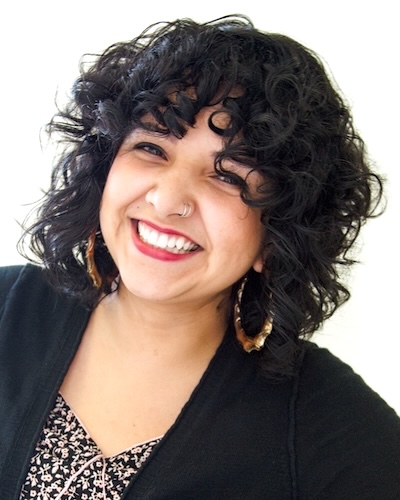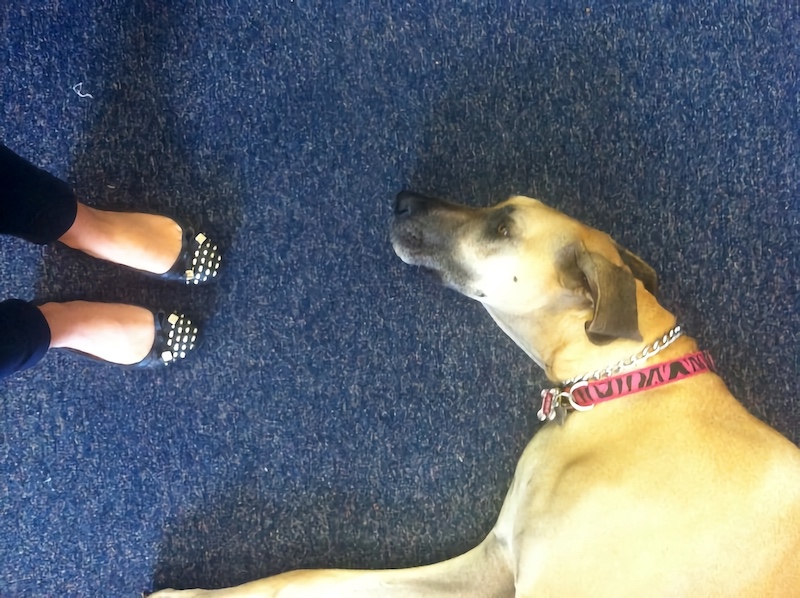Student Blog
What are OS/OT?

Gardening as an occupation ⟩
November 3, 2014, by Claire
What are OS/OT?
One of the goodies that I picked up from OTAC a couple weeks ago was a little plant set with forget-me-not seeds! While taking a break from studying, I decided to plant it and see what happens! Given my lack of experience with gardening, I consider this pretty adventurous of myself! I called my grandpa who lives back at home to tell him that I planted some seeds, because his favorite occupation is gardening. It was super fun to bond with my grandpa and share in this occupation which is so meaningful to him. He has been gardening for over twenty years now and he often complains about the squirrels and birds eating the fruit from his trees.
He told me to be patient with plants (I was saying that I wanted the seeds to sprout already), and that you plant the seeds with hope and feel a lot of joy when you see them grow. A couple days later, some sprouts came out, and I was surprised by how happy I felt seeing them!
Caring for a small plant can be a really good activity. I interned at the occupational therapy department of a Taiwanese mental health hospital a couple years ago, and planting seeds was an activity that we did with the patients in the acute ward. It was so inspiring to see the patients reflect on times when they had gardened in the past or relate to times when they had to patiently wait for something; every member planted some seeds and they all left the session with their individual potted plant. I thought it was a great way to engage these patients in a healthy occupation and give them a sense of responsibility and control over something.
Have any of you tried out any new occupations recently? Or, what are some occupations that your loved ones like to do, and have you ever had a chance to share in that experience?

Sprouts!
⋯

#otacconf2014 ⟩
October 26, 2014, by Kristy
Community Getting Involved What are OS/OT?
Last weekend I was lucky enough to attend The Occupational Therapy Association of California (OTAC) Annual Conference. It was my first OT Conference and I had a blast! I participated in the student track, which I really enjoyed because we had a variety of sessions throughout the days, some focusing on stress management, traumatic brain injury, autism spectrum disorder, and fine motor tools.
Since I want to go into school-based pediatrics, there were several sessions that I thoroughly enjoyed! The presenters had a lot of great ideas for tools and activities to do with children. One of the sessions was about putting the “Fun” in “Functional,” insert Therapy Fun Zone!!! They showed us many different activities we could work on to target sensory systems, hand strength, grasp, and visual skills. Another interactive session that focused on fun tools for kids was by Mama OT. What was great about this session, is she provided us with a lot of home items into creative items. The creator of Mama OT was an USC Occupational Therapy Graduate who saw the overlap of being a new mom and a new occupational therapist and wanted to share with others! One thing I love about the field of occupational therapy is that people are always willing to help others do better in their career. It’s great to follow blogs, facebook, or Pinterest boards to see what other occupational therapist are up to. Can you guess what we did with the items below?

Other great aspects of the OTAC conference included the social and mingling aspects. There were evening gatherings as well as exhibit halls that allowed us to interact with other occupational therapists and occupational therapy students. I personally enjoyed chatting with other OT students and comparing/contrasting what we were currently learning in class. And did I mention all the free stuff we got??? Pens, reusable bags, pencil grips, tools, etc., which all can be used to promote occupational therapy! Lastly, I can’t believe I almost forgot — to check out all the awesome pictures from the weekend, search #otacconf2014 on instagram. OTs use a lot of social media, and they had a competition using the hashtag. Overall, I really enjoyed the conference and see the benefit not only educationally, but personally as well. It excites me even more about becoming an occupational therapist and being out in the field soon!
⋯

Dr. Michael Iwama and the Kawa Model ⟩
October 22, 2014, by Brenda
Getting Involved What are OS/OT?
This past weekend, I attended the 2014 OTAC Conference and this year it was held in Pasadena, CA. One of the biggest highlights from this event was meeting Dr. Michael Iwama! I was star struck to say the least. Fortunately, he made himself very available to everyone who wanted to speak with him and I was even able to take a picture with him.

Dr. Iwama and me at the 2014 OTAC Conference
Here at USC, we familiarize ourselves with his work during the Spring semester of our first year of the program. One of our readings for the Clinical Reasoning Class includes his article Toward culturally relevant epistemologies in occupational therapy. In this article, he argues that in order to develop into a service that universally benefits all, we must strive for more culturally, relevant epistemologies, theories, and practice methods. He developed a conceptual model of practice that is known as the Kawa (River) Model. The Kawa Model uses Eastern philosophical views and perspectives to help view human occupation in a slightly different way from our Western common discourse. In order to transcend cultural boundaries, Dr. Iwama uses the metaphor of a river to illustrate a person’s subjective views of self, of well-being, and the meanings of occupations. With this concept, he encourages us to look at what the client perceives as personal assets, problems and circumstances in their lives, all of these representing different elements found in a river. As occupational therapists, Dr. Iwama states that we can focus on the spaces found in each client’s unique river and can view these as potential channels to increase the client’s flow through occupations. From this view, we become the people that enable the life-flow of our patients; another thing to add to my definition of occupational therapy!

Image taken from kawamodel.com
⋯

The USC Mrs. T.H. Chan Division of Occupational Science and Occupational Therapy ⟩
October 8, 2014, by Bindi
Community International What are OS/OT?
Try saying that aloud, the USC Mrs. T.H. Chan Division of Occupational Science and Occupational Therapy. A mouthful, isn’t it? While it may be a mouthful, it sure does have a wonderful ring to the name.
While they were preparing for the big announcement, I was asked to interview for the division’s video and it was then that I was told that we were about to receive a $20 million gift! I was shocked, I had never heard of any occupational therapy school receiving such a sizeable amount. Of course during the interview I was asked what I thought the impact of this gift would be in the field of occupational therapy. I may have been flustered then and nervous to talk to a device that was recording me, but now I have a chance to think and give a well-articulated answer to that question.
My hope is that this gift will go a long way in research so that we as OTs have a stronger evidence based practice. Every occupational therapist around the world knows what Sensory Integration, and I would like for this gift to have the same impact in the world.
This gift should give people more access to the occupational therapy education. The China Initiative is wonderful news especially considering there isn’t a Chinese word for ‘occupational therapy.’ Giving easier access to occupational therapy education may be in terms of university affiliations, scholarships and awareness.
USC already has a great global initiative, and are recruiting people from all over the world — like me. But this should increase the numbers, making the OT course available to more candidates from around the world especially from Africa. It is only South Africa that has a bachelor’s and master’s program for occupational therapy that is highly valued. Most of the other African countries have only diploma schools.
I hope we have an African initiative soon too! ☺
⋯

Building Rapport ⟩
September 3, 2014, by Leila
Fieldwork What are OS/OT?
My first Level II fieldwork was an amazing journey. I interned at the VA in Long Beach within the Community Living Center MWFs and the mTBI clinic TTHs. That means I had two amazing CIs and I learned from two different settings. The VA Long Beach Healthcare System is one of the most diversified health care systems. They are active in both research and education, partnering with universities and education centers across Southern California to train a new generation of health care leaders. Fortunately, I was part of the new generation of health care leaders they trained!

VA Long Beach Hospital

Patient garden at VA Long Beach

Lunchtime with OT students

Puzzle activity with vets

Big hand vs. small hand

Therapy dogs at the VA

Dominos with vets at VA

Drivers training in service at VA

Handmade pickle contracture hand splint

OT students at the VA
Upon starting my first week of fieldwork I was a nervous wreck. I thought to myself . . . I’m not ready. Will I remember everything from my adult rehabilitation course? How will I be as an OT? Will my CI like me? Will the patients like me? Those were just a few of the questions that ran through my head. That Monday morning came by quick after a week of finishing up spring semester. I got up at 4:30am, performed my ADLs 😉, and headed out to Long Beach. I live in Chino, which is a 42-mile commute to Long Beach one-way. I didn’t want to be late on my first day so I made sure I left my house no later than 5:45am. Of course I arrived 1 hr early! Better safe than sorry. First week was filled with introductions, orientations, getting familiar with the setting and observations. I observed my first evaluation within the first week, and by the following 2 weeks I was already attempting my evaluation skills! One thing I realized the first day at the VA was how welcoming everyone was. That put me at ease and really set the tone for how my experience was going to be like for the weeks to come. Fortunately, I have nothing but great things to share about my experience at the VA in Long Beach. Of course I can share about how much I learned, the overall OT practice there, the assessments they used, documentation skills I acquired, etc. But . . . I would have to say the most important skill set I had the opportunity to demonstrate was building rapport.
I had such an amazing time working with my patients, but there were times where I thought I had no idea what I was doing.
Times that were challenging.
Times that were mentally/physically exhausting.
Times that were rewarding.
Upon my last week, one veteran wrote this to me:
“You are one of the few people who have made a big improvement in my life in a short period of time since I have returned home from overseas. You are going to make a great OT and I believe you are going to be a blessing to many people in the future.
. . . Who you are, and your heart, is going to be your strength and best tool in your chosen occupation. ‘People won’t care how much you know until they know how much you care.’”
This is building rapport. :’)
⋯





